Catholic Customs
 |
 |
 |
 |
 |
 |
 |
Polish All Souls Day:
Cemeteries Become Seas of Lights
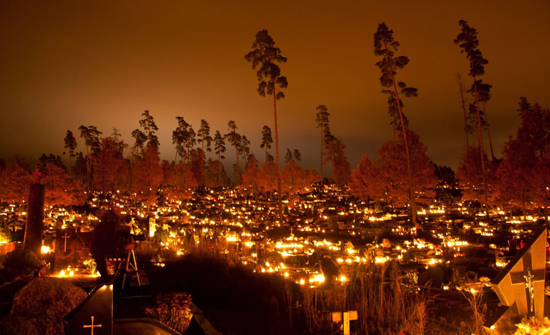
A couple weeks ago, I was conversing with a Polish lady who immigrated to the United States when she was a young girl. I mentioned Halloween and asked to hear about the Polish customs that centered around All Souls and All Saints Day.
The lady was appalled by the American Halloween with its concentration on demons and witches and its neglect of the Saints and the souls in Purgatory. She could not understand why America was more enthused with these diabolical creatures than with the great Catholic feasts of All Saints' Day and All Souls’ Day, which occur back to back on November 1st and 2nd.
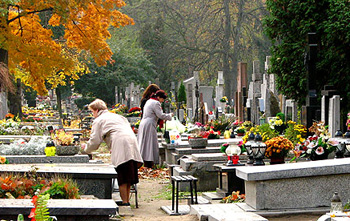
Preparing tombs with votive candles and flowers; below, Krakow's Rakowwicki Cemetery as eve sets on
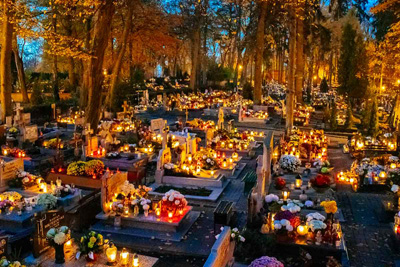
Her family would begin preparing a week ahead of time by cleaning up the graves of their deceased relatives. The whole village would be at the cemeteries preparing the graves of all the deceased, including the graves of those who had no living relatives in the area. Later, I read that the Poles took this obligation of cleaning the graves so seriously that after World War II many would travel to Monte Casino, Italy, to pay this honor to the graves of the Polish soldiers who died there. We can see here the upright character of a people who truly care about their fellow countrymen.
Nor do they forget the foreign soldiers and airmen who died in Poland in WW II and were buried there. The graves in quiet and little visited corner of Krakow's Rakowicki Cemetery also are decorated with votive lights and flowers. On this day, all of the dead are to be remembered and honored. As you can see here and here, this is a custom that continues in Poland to our days.
After describing the labor undertaken to prepare for the feast, the Polish lady told me that there was another preparation that the young ladies particularly enjoyed. Her most cherished memory was receiving a new outfit for All Saints Day. All of the girls and boys of the village would look forward to wearing their new outfits to Mass on the great feast.
After coming home from Mass, they would have a traditional Polish meal and wait in expectancy for the approaching night commemorating the poor souls, called Zaduski or Dzién Zaduszny, which roughly translates to "the day of prayers for the souls."
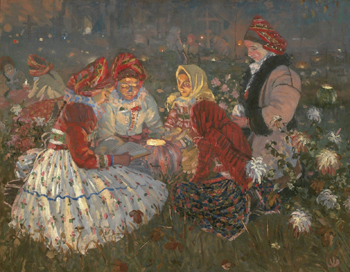
The custom began with women bringing bread and blessed candles to pray over the dead
Families traditionally tried to give out as much as possible (in some places, they baked and gave out up to 200–300 buns of bread), believing that this would help to bring the family blessings and prosperity.
My friend recalled that when she was young, the most marvelous event of the feast was the evening of All Saints Day when all of the people would travel to the cemeteries to light blessed candles and place flowers on the graves. Polish legend says that the lights in the cemeteries help to guide wandering souls who are stuck on earth as part of their Purgatory.
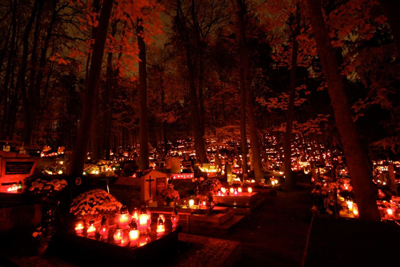
'A sea filled with lights': from the air the whole cemetery blazes
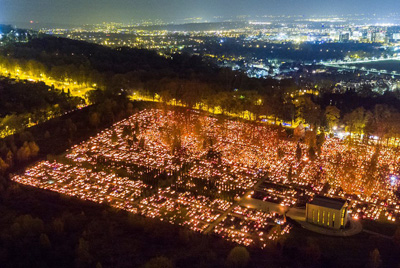
In fact, she noted, she knew many Polish people who sent back money to Poland to contribute to the votive fund so that they could properly honor their deceased family members. Even here far away in America, many Poles have found a way to establish a link with their family and country through this old and venerable custom that continues in Poland today.
She bemoaned the fact that this custom or anything similar to it was not practiced in America. She longed for the marvel and awe that these beautiful candle-lit cemeteries inspired in her and all of her fellow Poles. Such charming customs should inspire us as Americans to reclaim these Catholic feasts and to bring some of these customs here to inspire a wonder and awe in our own children, and to teach us to seek the sublime.
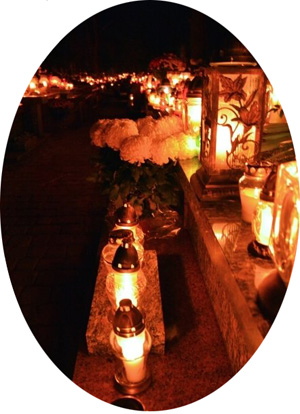

Posted November 1, 2019
______________________
______________________








